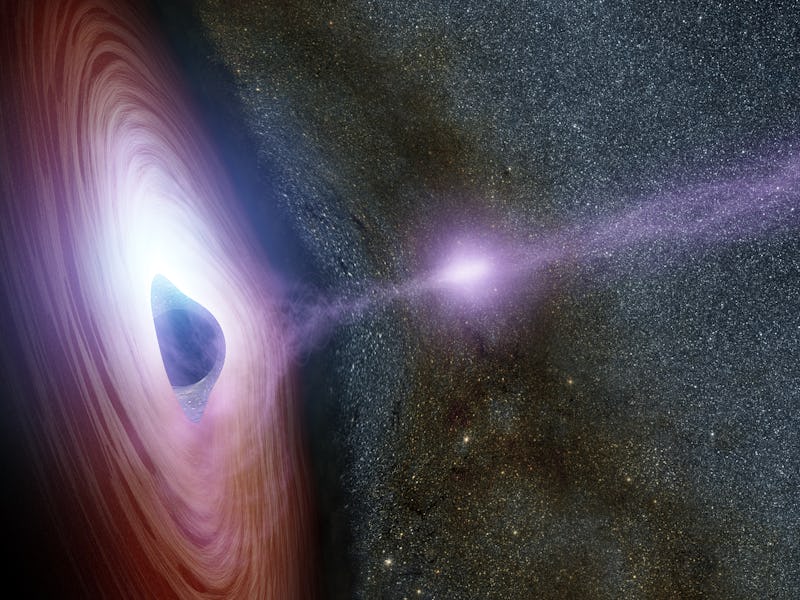The bonkers connection between massive black holes and dark matter
Supermassive black holes (SMBHs) appear early in the history of the universe, as little as a few hundred million years after the big bang.

We don’t quite understand how the first supermassive black holes formed so quickly in the young universe.
But a team of physicists is proposing a radical idea: Instead of forming black holes through the usual death-of-a-massive-start route, giant dark matter halos directly collapsed, forming the seeds of the first great black holes.
Supermassive black holes (SMBHs) appear early in the history of the universe, as little as a few hundred million years after the Big Bang. That rapid appearance poses a challenge to conventional models of SMBH birth and growth because it doesn’t look like there can be enough time for them to grow so massive so quickly.
“Physicists are puzzled why SMBHs in the early universe, which are located in the central regions of dark matter halos, grow so massively in a short time,” said Hai-Bo Yu, an associate professor of physics and astronomy at UC Riverside, who led a study of SMBH formation that appeared in Astrophysical Journal Letters.
“It’s like a 5-year-old child that weighs, say, 200 pounds. Such a child would astonish us all because we know the typical weight of a newborn baby and how fast this baby can grow,” he adds.
“Where it comes to black holes, physicists have general expectations about the mass of a seed black hole and its growth rate. The presence of SMBHs suggests these general expectations have been violated, requiring new knowledge. And that’s exciting.”
So instead of trying to form black holes from the deaths of massive stars, then trying to get them to accumulate enough material to grow to SMBH status, perhaps something else — dark matter halos — formed them.
“Our work provides an alternative explanation: a self-interacting dark matter halo experiences gravothermal instability and its central region collapses into a seed black hole,” Yu said.
There’s already plenty of dark matter in the early universe. It accounts for over 80 percent of all matter in the cosmos, and the first galaxies grew inside of much larger dark matter clumps, or halos.
But in order for dark matter to collapse enough to form black holes, it must interact with itself. That way, it can lose all the kinetic energy gained as it collapses, allowing it to reach high enough densities to trigger the formation of a black hole.
Since that black hole would be born from a lot more material than a star, it would already be well on its way to becoming supermassive.
“The advantage of our scenario is that the mass of the seed black hole can be high since it is produced by the collapse of a dark matter halo,” Yu said. “Thus, it can grow into a supermassive black hole in a relatively short timescale.”
In this model, dark matter halos don’t do all the work. Baryons — normal matter — also help.
“First, we show the presence of baryons, such as gas and stars, can significantly speed up the onset of the gravothermal collapse of a halo and a seed black hole could be created early enough,” said Wei-Xiang Feng, Yu’s graduate student and a co-author on the paper. “Second, we show the self-interactions can induce viscosity that dissipates the angular momentum remnant of the central halo.”
“Third, we develop a method to examine the condition for triggering general relativistic instability of the collapsed halo, which ensures a seed black hole could form if the condition is satisfied.”
“In many galaxies, stars and gas dominate their central regions,” Yu said. “Thus, it’s natural to ask how the presence of this baryonic matter affects the collapse process. We show it will speed up the onset of the collapse.”
“This feature is exactly what we need to explain the origin of supermassive black holes in the early universe. The self-interactions also lead to viscosity that can dissipate angular momentum of the central halo and further help the collapse process.”
This article was originally published on Universe Today by PAUL M. SUTTER. Read the original article here.